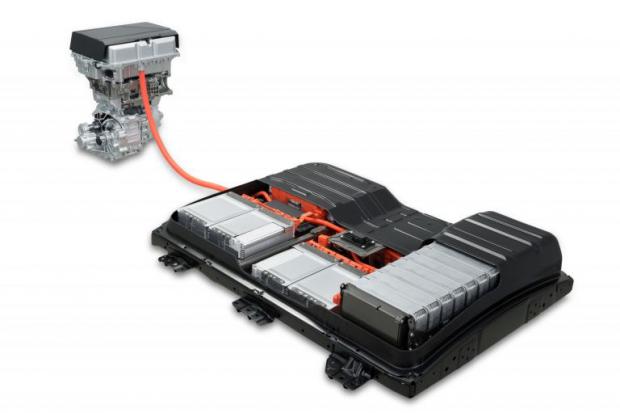
Breaking News
DRINK 1 CUP Before Bed for a Smaller Waist
 Nano-magnets may defeat bone cancer and help you heal
Nano-magnets may defeat bone cancer and help you heal
 Dan Bongino Officially Leaves FBI After One-Year Tenure, Says Time at the Bureau Was...
Dan Bongino Officially Leaves FBI After One-Year Tenure, Says Time at the Bureau Was...
 WATCH: Maduro Speaks as He's Perp Walked Through DEA Headquarters in New York
WATCH: Maduro Speaks as He's Perp Walked Through DEA Headquarters in New York
Top Tech News
 Laser weapons go mobile on US Army small vehicles
Laser weapons go mobile on US Army small vehicles
 EngineAI T800: Born to Disrupt! #EngineAI #robotics #newtechnology #newproduct
EngineAI T800: Born to Disrupt! #EngineAI #robotics #newtechnology #newproduct
 This Silicon Anode Breakthrough Could Mark A Turning Point For EV Batteries [Update]
This Silicon Anode Breakthrough Could Mark A Turning Point For EV Batteries [Update]
 Travel gadget promises to dry and iron your clothes – totally hands-free
Travel gadget promises to dry and iron your clothes – totally hands-free
 Perfect Aircrete, Kitchen Ingredients.
Perfect Aircrete, Kitchen Ingredients.
 Futuristic pixel-raising display lets you feel what's onscreen
Futuristic pixel-raising display lets you feel what's onscreen
 Cutting-Edge Facility Generates Pure Water and Hydrogen Fuel from Seawater for Mere Pennies
Cutting-Edge Facility Generates Pure Water and Hydrogen Fuel from Seawater for Mere Pennies
 This tiny dev board is packed with features for ambitious makers
This tiny dev board is packed with features for ambitious makers
 Scientists Discover Gel to Regrow Tooth Enamel
Scientists Discover Gel to Regrow Tooth Enamel
 Vitamin C and Dandelion Root Killing Cancer Cells -- as Former CDC Director Calls for COVID-19...
Vitamin C and Dandelion Root Killing Cancer Cells -- as Former CDC Director Calls for COVID-19...
Stanford Says Its Sodium-Based Battery Beat Lithium On Most All Fronts...

But is it really worth its salt?
When it comes to electric vehicles, lithium ion batteries are the only game in town. But that doesn't mean other sorts of chemistries aren't vying for a piece of the action. Lithium air batteries, lithium sulfur (Li-S) batteries, and the "asphalt" battery we recently reported on are examples of other approaches being taken towards providing improved energy storage. Now, meet another: the sodium ion battery.
Though pioneered by others, researchers at Stanford (including Yi Cui, a rock star in battery science circles), say their approach can offer similar energy storage of lithium batteries, but for 80% less cost. Obviously, that's significant.
When it comes to other metrics by which to measure performance, however, information is limited. While the team says they've optimized the charging cycle, they still can't give a figure on volumetric energy density, which might indicate whether or not this technology could be used in cars. If the space needed to hold energy is much larger than what is in commercial use now, then this chemistry might be relegated to a role in renewable energy storage instead of in transportation.



